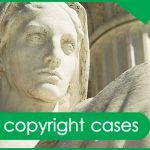Oracle v. Google: Preserving incentives for creativity and innovation

Since 2005, Google has generated over $40 billion dollars in revenue from its Android operating system—software that admittedly copied a significant set of application program interface (“API”) packages from Oracle’s Java platform. By doing this, Google made it easier for Java application programmers to develop apps and programs for Android. But while Google benefitted greatly from free-riding off of Oracle’s Java APIs, a jury last year held that Google’s copying was excused by fair use.
Ordinarily, fair use allows individuals in certain circumstances to incorporate copyrighted material into the creation of new works, such as parodies or critical commentary, striking a balance between protecting creator’s rights and allowing certain productive uses that don’t interfere with those rights. But in recent years, fair use hasn’t always been “fair,” since some courts have been using it to undermine these exclusive rights.
In 2010, Oracle brought suit against Google for patent and copyright infringement when Google copied 37 of Oracle’s Java APIs into its Android operating system for smartphones and other mobile devices. Google originally argued that the APIs were not protected under copyright law and succeeded with this argument in the lower court. But in 2014, the Federal Circuit Court of Appeals reversed and held that the APIs were indeed copyrightable expression. Google then argued in the lower court that its copying was fair use, and last May, following a trial, the jury held in favor of Google. Afterward, the lower court affirmed the jury’s verdict and held that a reasonable jury could find that Google’s use was fair use. The court explained that under the first fair use factor, Google had transformed the Java API from its desktop use to smartphone use while under the fourth fair use factor, Oracle did not market the Java API for the smartphone industry and thus Google did not harm Oracle’s target market. Oracle subsequently appealed to the Federal Circuit for a second time.
This ruling is problematic for a number of reasons. First, the court’s holding on the first factor runs against well-established law that merely adapting a work to a new format or medium is not transformative—for example, ripping a CD to a digital mp3 file and uploading it to the internet. As for the fourth factor of fair use analysis—the effect of Google’s use upon the potential market for Oracle’s Java API—the court did not consider the market for all potential uses or derivative works that Oracle might develop or license others to develop, but focused narrowly on the markets for desktop and laptop computers (Oracle’s original use). This is contrary to the law.
The decision is especially troubling for small businesses and independent artists. According to the court, a competitor who enters the market first could be deemed “transformative” under the first fair use factor, and considered not to detract from the original creator’s market for the original work under the fourth factor. Such a system would not only fail to protect copyright owners’ investments in their works, but would also disincentivize them from creating new works going forward.
For the reasons discussed above, the Copyright Alliance has filed an amicus brief in Oracle v. Google, asking the Federal Circuit Court of Appeals to reverse the district court’s troubling decision and apply the fair use factors so as not to further undermine creators’ rights. You can read the amicus brief here.
Rachel Kim is a law student at Antonin Scalia Law School, George Mason University in Arlington, Virginia. Rachel is interning at the Copyright Alliance for the Spring semester.
 Check out more copyright cases
Check out more copyright cases
photo credit: Grassetto/iStock/thinkstock

